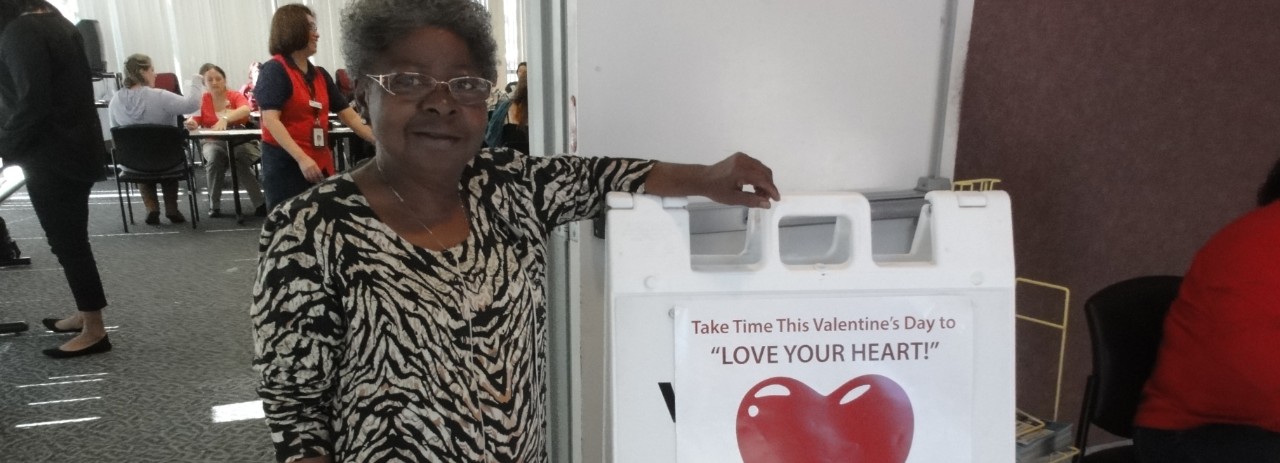
One out of every four San Diego adults has been diagnosed with high blood pressure. That equates to over 600,000 San Diegans. Of those diagnosed with high blood pressure, 67% or over 400,000 San Diegans, take medication to control their blood pressure.
High blood pressure or hypertension is known as the silent killer, because often the symptoms go unrecognized. Every month, 40 San Diegans are discharged from the hospital and 22 die due to hypertension. Hypertension can lead to heart disease and stroke. Many more will suffer from heart attack, stroke, or kidney disease for which high blood pressure is often the first indicator of disease.
What is High Blood Pressure?
Blood pressure is the force of blood pushing against the walls of the arteries that carry blood from your heart to other parts of your body. Blood pressure normally rises and falls throughout the day, but it can damage your heart and cause health problems if it stays high for a long time. High blood pressure is also called hypertension.
Having high blood pressure puts you at risk for heart disease and stroke, which are leading causes of death in the United States.1
Signs and Symptoms of High Blood Pressure
High blood pressure usually has no warning signs or symptoms, so many people don't realize they have it. Since 1999, more people with high blood pressure—especially those 60 years old or older—have become aware of their condition and received treatment. Unfortunately, about one of five U.S. adults with high blood pressure still do not know that they have it.4 The only way to know if you have high blood pressure is to have a doctor or other health professional measure it.
Blood pressure is measured using two numbers. A normal adult blood pressure is less than or equal to 120/80 millimeters of mercury (mmHg). The first or top number, called systolic blood pressure, represents the pressure in your blood vessels when your heart beats. The second or bottom number, called diastolic blood pressure, represents the pressure in your blood vessels when your heart rests between beats. Blood pressure is measured in millimeters of mercury (mmHg).
People with levels between 120/80 mmHg and 139/89 mmHg have a condition called prehypertension, which means they are at high risk for developing high blood pressure. This follows that a blood pressure above 140/90 is by definition defined as high blood pressure.
Non Modifiable Factors
Both men and women can have high blood pressure. Some other characteristics that you cannot control—like your age, race, or ethnicity—can affect your risk for high blood pressure.
Modifiable Factors
Keeping your blood pressure levels in a healthy range usually involves taking prescribed medication, reducing sodium in the diet, getting daily physical activity, and quitting smoking.
Your lifestyle choices can increase your risk for high blood pressure. To reduce your risk, your doctor may recommend changes to your lifestyle.
Behaviors that increase your risk of developing high blood pressure include:
Recap of Love Your Heart 2014
On February 14, 2014, almost 18,000 San Diegans participated in Love Your Heart. There were 17,774 blood pressure screenings performed at over 200 sites across 60 organizations.
One out of every two individuals screened were identified as having an elevated blood pressure. Of these, 57 individuals were identified as having urgent or emergent hypertension requiring immediate medical referral.
Alberta Smith (pictured above), after completing her free blood pressure screening, says: “I take care of my grandson, so I thought it was important to get my blood pressure checked.” She feels her blood pressure could be lower, so she plans to eat more vegetables, drink more water, and walk more. Her message to her family on Valentine’s Day?: “I love them all, especially my baby sister, older sister and brothers.”
References:
1. Go AS, Mozaffarian D, Roger VL, Benjamin EJ, Berry JD, et al. Heart disease and stroke statistics—2013 update: a report from the American Heart Association. Circulation. 2013;127:e6–e245.
2. Egan BM, Zhao Y, Axon RN. US trends in prevalence, awareness, treatment, and control of hypertension, 1988–2008. JAMA. 2010;303(20):2043–50.
3. CDC. Vital signs: awareness and treatment of uncontrolled hypertension among adults—United States, 2003–2010. MMWR. 2012;61(35);703–9.
4. Go AS, Mozaffarian D, Roger VL, et al; the American Heart Association Statistics Committee and Stroke Statistics Subcommittee. Heart disease and stroke statistics—2013 update: a report from the American Heart Association. Circulation. 2013;127:e6-245.
5. Vasan RS, Beiser A, Seshadri S, et al. Residual lifetime risk for developing hypertension in middle-aged women and men: the Framingham Heart Study. JAMA. 2002;287(10):1003–1010.